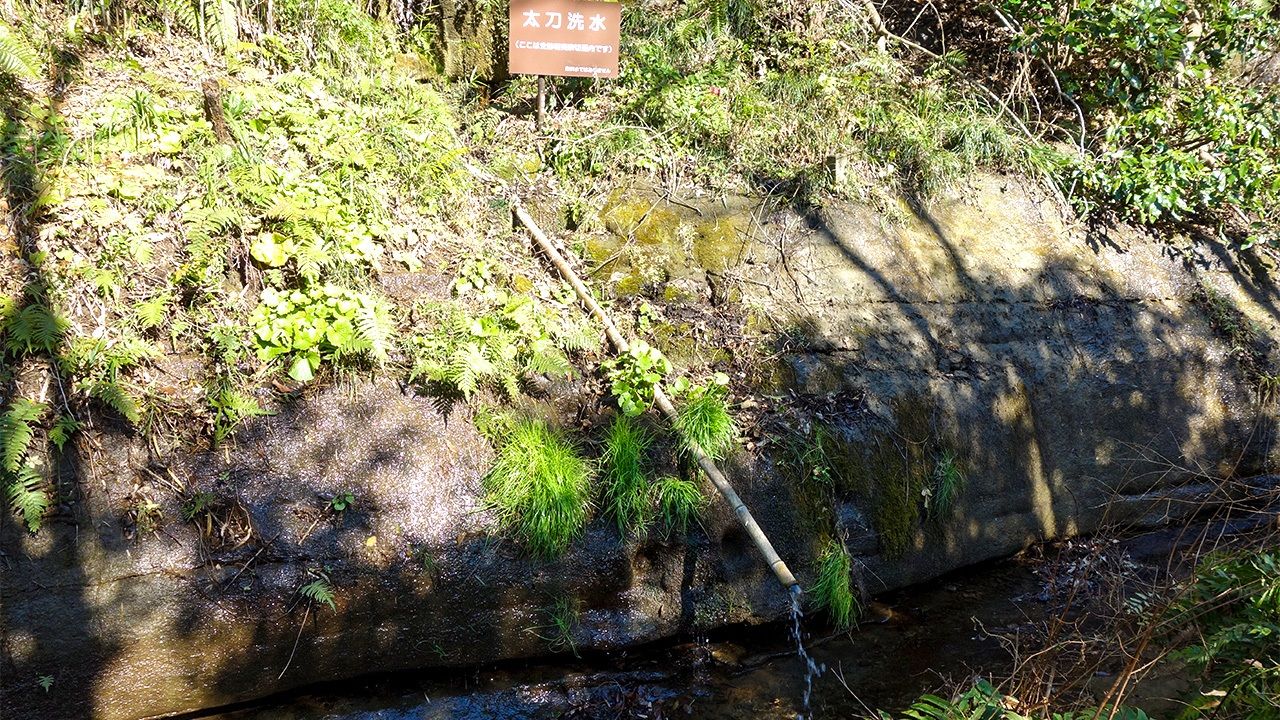A stream and a small path steeped in history
The buses that leave from Kamakura Station to Tachiarai have always intrigued me. Tachiarai, or “sword washing”… this expression makes me shiver. At the stop of the same name, in front of the main gate of Kamakura Reien, a cemetery located to the east of the city, an entrance leads to the old Kanazawa-kaidô road. At the end, a narrow and steep descent of stone stairs. Then, after crossing a residential area, a small stream. And further into the clearing is a waterhole called Tachiarai-mizu, “sword-washing water.” It is here that the samurai Kajiwara Kagetoki is said to have washed the blade of his sword still stained with the blood of his victim: Kazusanosuke Hirotsune.
The Tachiarai stream
Follow this stream, it leads to a path roughly cut into the stone. The place is known as Asaina. Seven such cuts are visible in the rock walls of the mountains surrounding the coastal city of Kamakura, facilitating passage while strengthening its defense. Asaina is the one located furthest east. About 800 years ago, this place was an obligatory stop for samurai, whether they were going to or returning from Kamakura. The fact that a sword was cleaned of the blood of the man he had just slain does not seem appropriate for such a peaceful place…
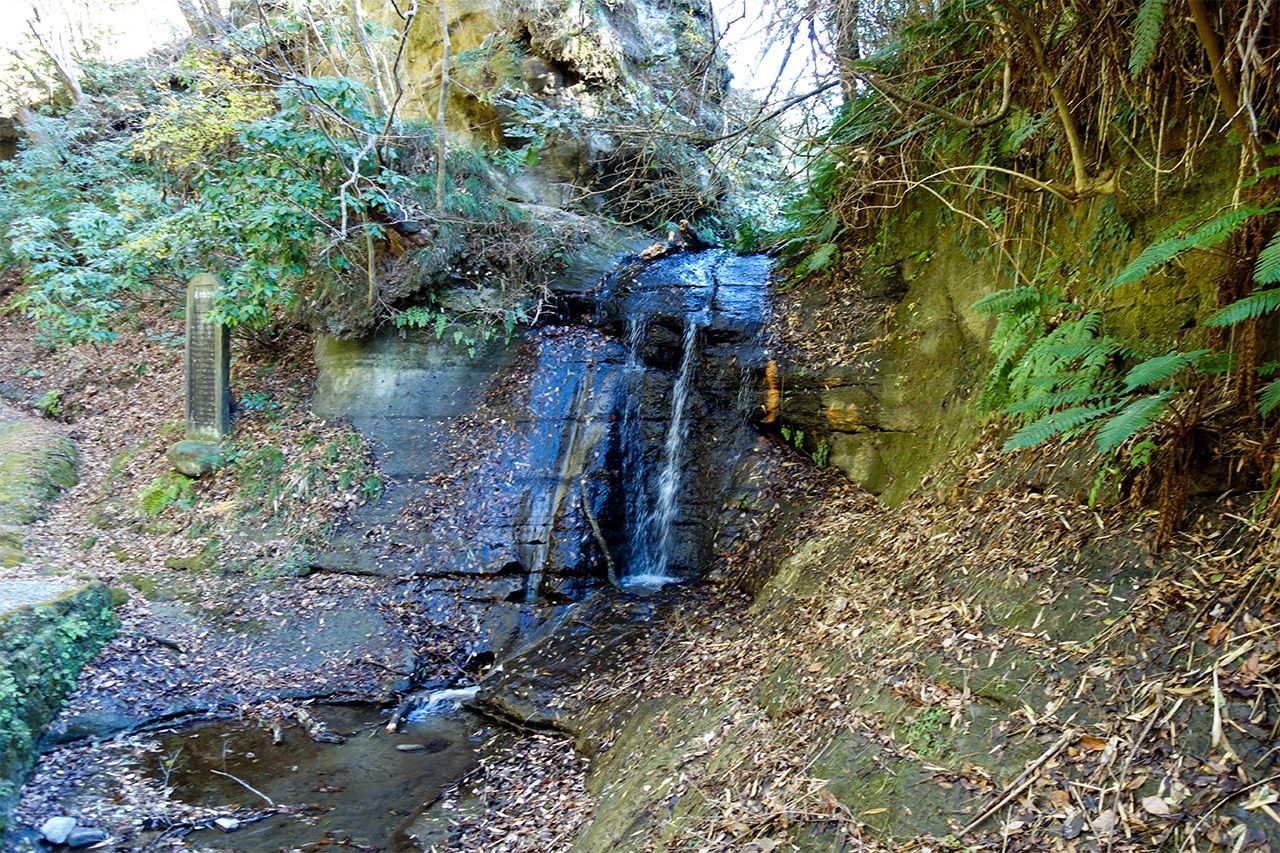
A small waterfall at the entrance leading to Asaina Passage.
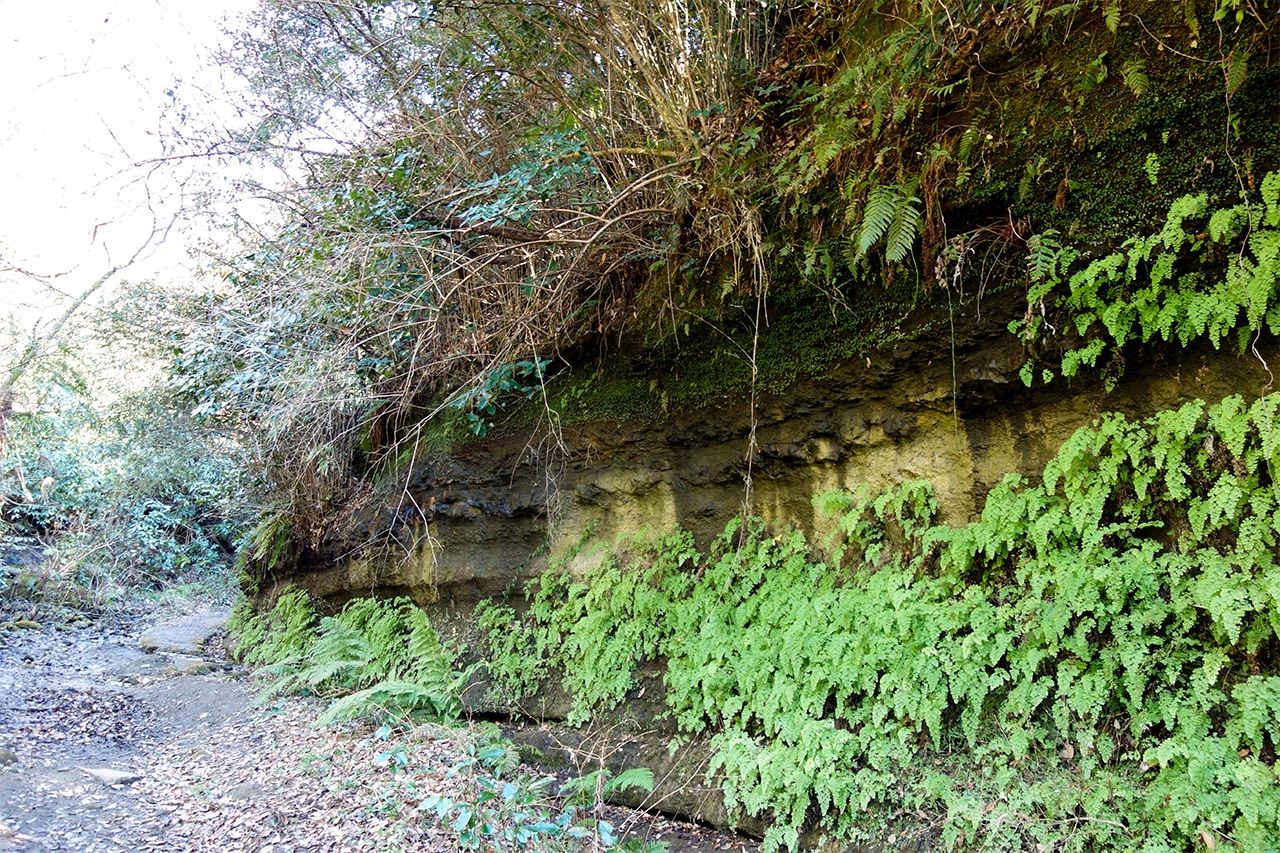
Asaina has clear signs of where the rock was cut to excavate the passage.
If Minamoto no Yoritomo, the very first shogun in history, ordered the assassination of Hirotsune, his former ally, it was because he did not like his arrogance. Furthermore, he suspected him of preparing a revolt. Kagetoki is said to have killed Hirotsune in 1183 while playing part of sugorokuwith him. Certainly inglorious, this episode is not the only one, far from it.
Ôsawa Izumi, curator at the Kamakura Museum of Culture and History explains:
“There have been many stories of bloodshed, other than the legend of Tachiarai. Kagetoki had a reputation as a sworn enemy of Yoshitsune. For this reason, he was often portrayed in a negative way. He had certainly received a good education and was a close ally of Yoritomo, but as much as Yoshitsune was considered a “bright” character, Kagetoki was seen as a warrior with a “dark” soul. »
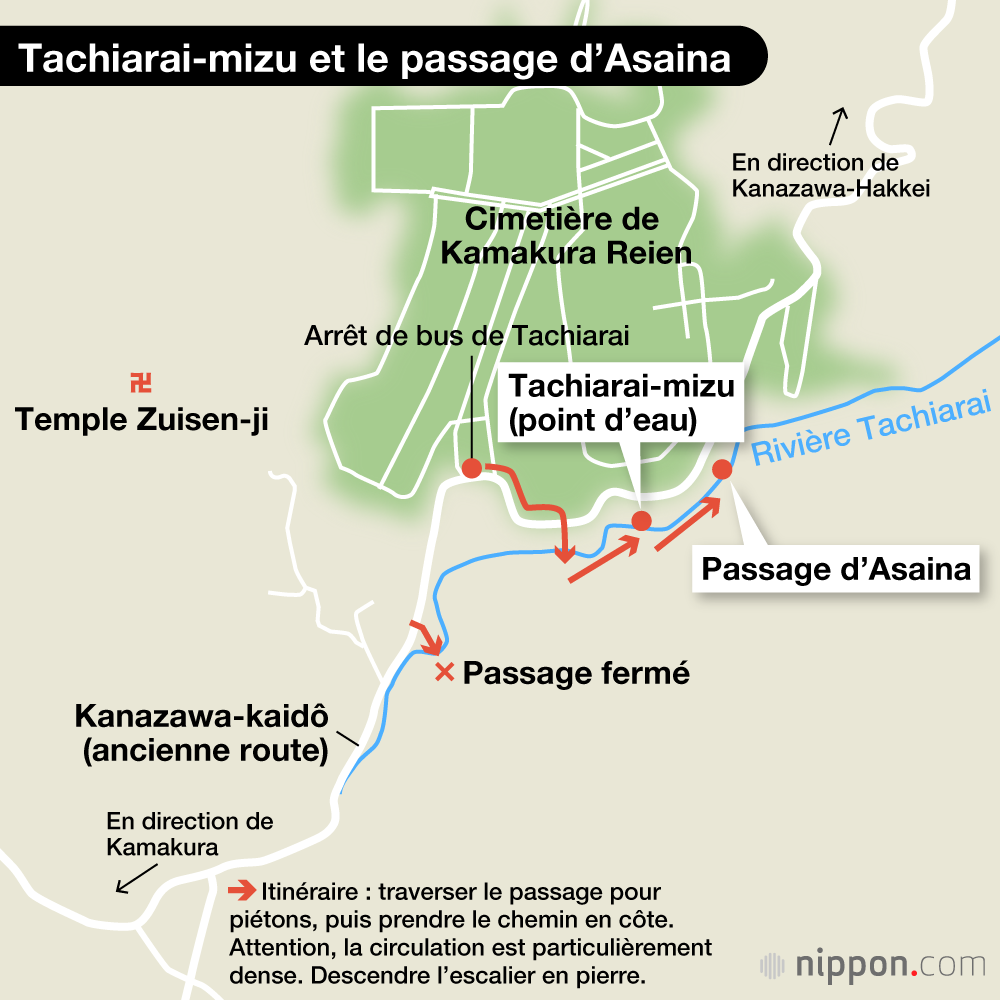
Yoritomo’s intentions revealed
Kagetoki was initially a warrior from the Taira clan. Some did not know his qualities as a compassionate man, he excelled in the literary and military arts and had served in the imperial capital. But then why was he perceived by many as an unsavory character? In 1180, during the Battle of Ishibashiyama, the first clash between the Minamoto and Taira clans, near the present-day city of Odawara, Kagetoki apparently took pity on Yoritomo and let him escape. His death might have changed the course of history. If he had killed Yoritomo at that time, there might never have been a Kamakura shogunate…
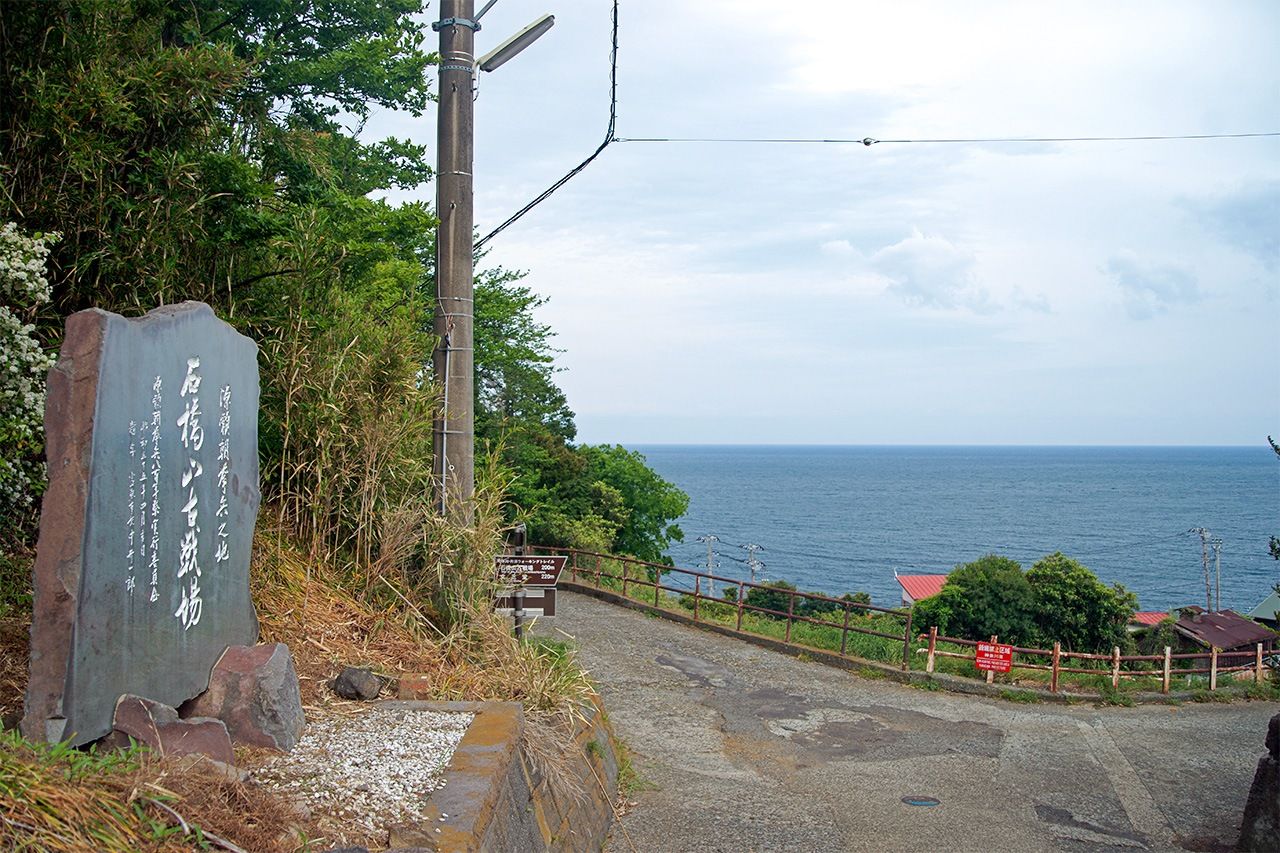
Le site de la bataille d’Ishibashiyama (©Jiji)
Defeated, Yoritomo fled Cape Manazuru aboard a boat via Sagami Bay, towards the Bôsô Peninsula (today in Chiba Prefecture). There, he benefited from the support of Hirotsune and his 20,000 soldiers, giving him the military presence he needed to seize Kamakura that year. In a twist, three years later, he ordered the assassination of Hirotsune, which suggests that he had little confidence in him.
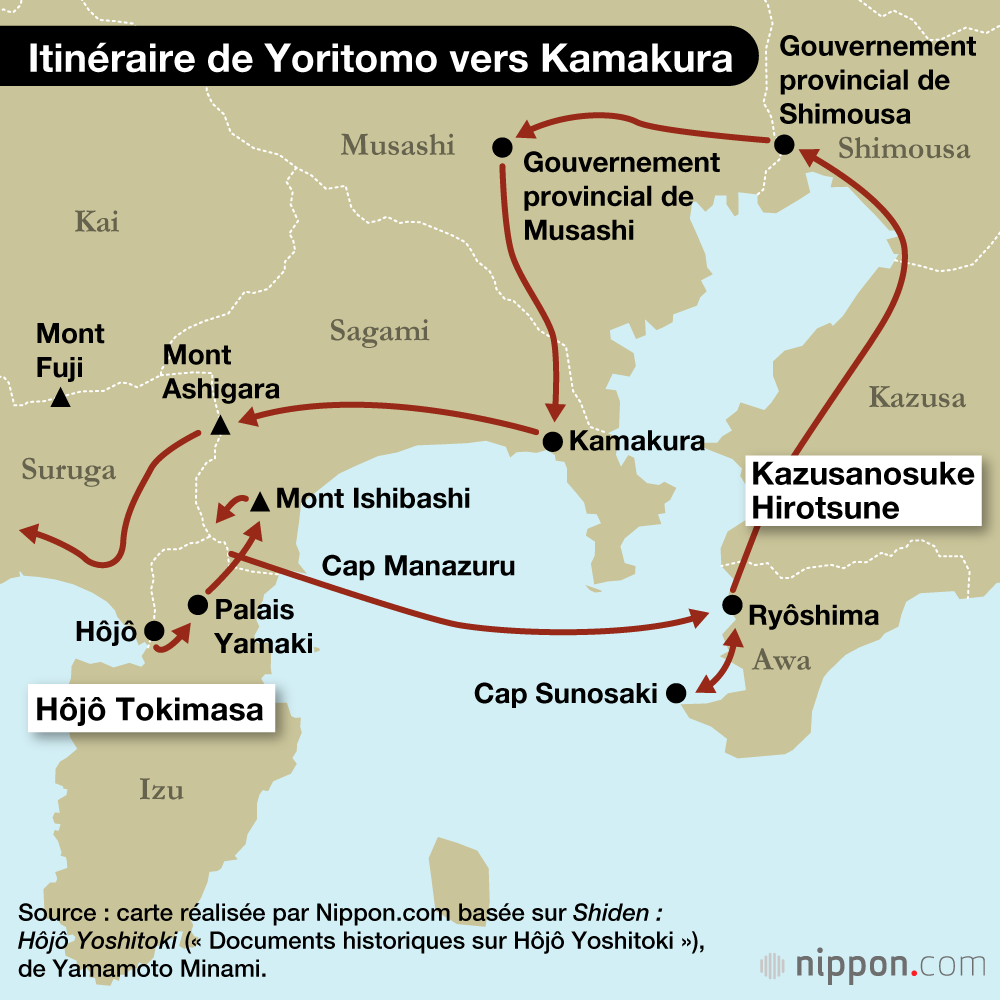
After the Battle of Ishibashiyama, Kagetoki was promoted by Yoritomo to the prestigious position of head of the Samurai-dokoro (Samurai Bureau). His main responsibility was to protect Yoshitsune, who had successfully pushed the Taira clan into the far western provinces. Kagetoki revealed to Yoritomo that Yoshitsune had received a title from the imperial court without authorization. And this was of course not the only way he had acted to ensure his war successes. Asaina shows clear signs of where the rock was cut to carve the passage. Yoshitsune refers to this in his Letter from Koshigoewhere he writes that he was “the object of slander”.
But Kagetoki’s actions are not limited to mere reports: he also allegedly incited Yoritomo to hunt down and assassinate Yoshitsune. The historical novel The widow by Nagai Michiko, which received the Naoki Prize (one of the most prestigious Japanese literary awards), contains a scene where Kagetoki recognizes Yoritomo’s equivocal behavior, typical of the nobility. He then affirms his real intentions and encourages Yoritomo to kill Yoshitsune. But why did Kagetoki bother to question Yoritomo and take on the role of villain? With his book, Nagai Michiko then suggests that Yoritomo rarely exposed himself and that his decisions were most often dictated to him by others, especially if they risked being criticized. And Kagetoki was perfectly aware of this and therefore became Yoritomo’s spokesperson. Why rebel if it allowed Yoritomo to strengthen his position as leader of the eastern provinces of the country? But his plan to create a society run by the military made him increasingly arrogant.
Yoritomo died in 1199, a hard blow for Kagetoki who lost his main support. A difficult period then begins for him. He is considered a rumor monger and is denounced by 66 of the shogun’s vassals, which will lead to his downfall. Although he played a key role under both Yoritomo and his successor Yoriie, he was removed from his position as a member of the council of 13 officials. His descent into hell ends with his assassination in Suruga in 1200. But the imbalance caused by his absence among the 13 officials will be very beneficial to the Hôjô clan in gaining the upper hand.
Deeds of Kajiwara Kagetoki in allegiance to Minamoto no Yoritomo
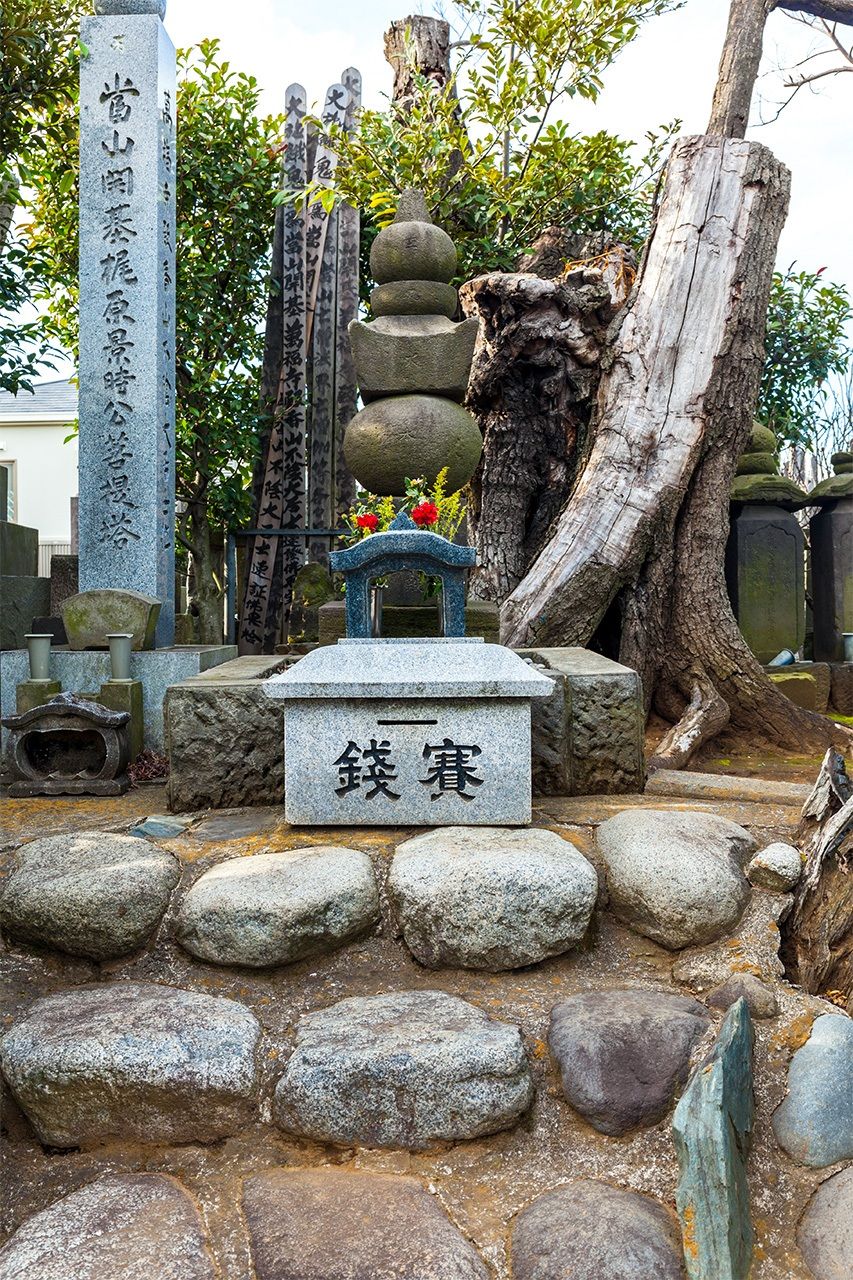
Tomb of Kajiwara Kagetoki at Manpuku-ji temple (the one located in Tokyo). ©Jiji
Informations
- Tachiarai-mizu: from the east exit of Kamakura Station, take line 4 of the Keihin Kyûkô bus towards Kanazawa Hakkei. Get off at the main entrance of Kamakura Reien Cemetery, Tachiarai (stop name in Japanese: Kamakura-Reien-Seimon-Mae / Tachiarai). Walk along the Tachiarai stream for a few minutes.
- Asaina Pass: A stone monument beyond the Tachiarai-mizu marks the entrance to the pass. Continue in this direction.
(Reporting and text by Mochida Jôji, from Nippon.com. Title photo: the Tachiarai-mizu watering hole, where Kajiwara Kagetoki is said to have washed the blade of his sword after killing Kazusanosuke Hirotsune. All photos are from Nippon.com , unless otherwise stated.)
2023-09-10 00:09:41
#story #legend #Tachiarai
